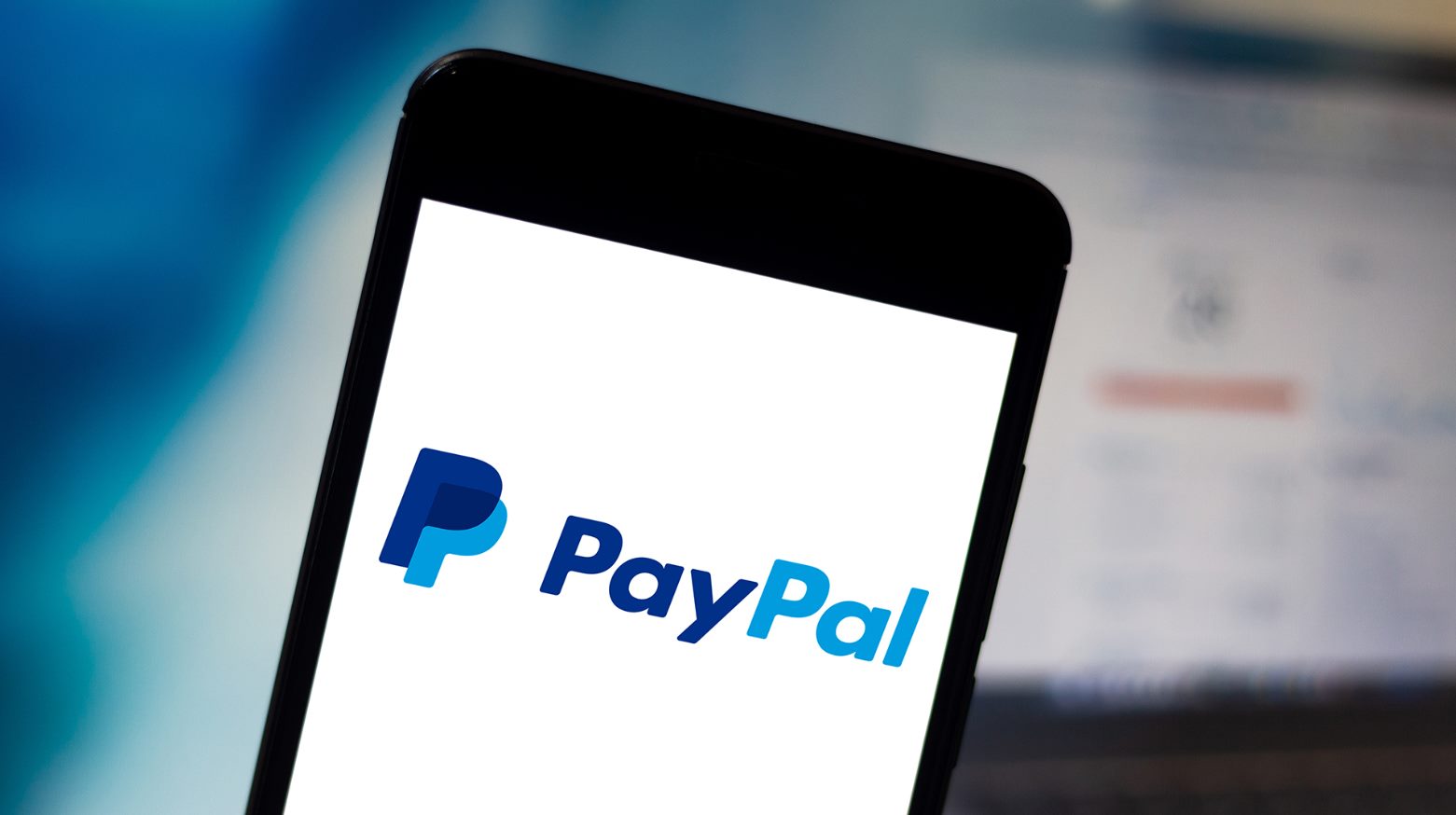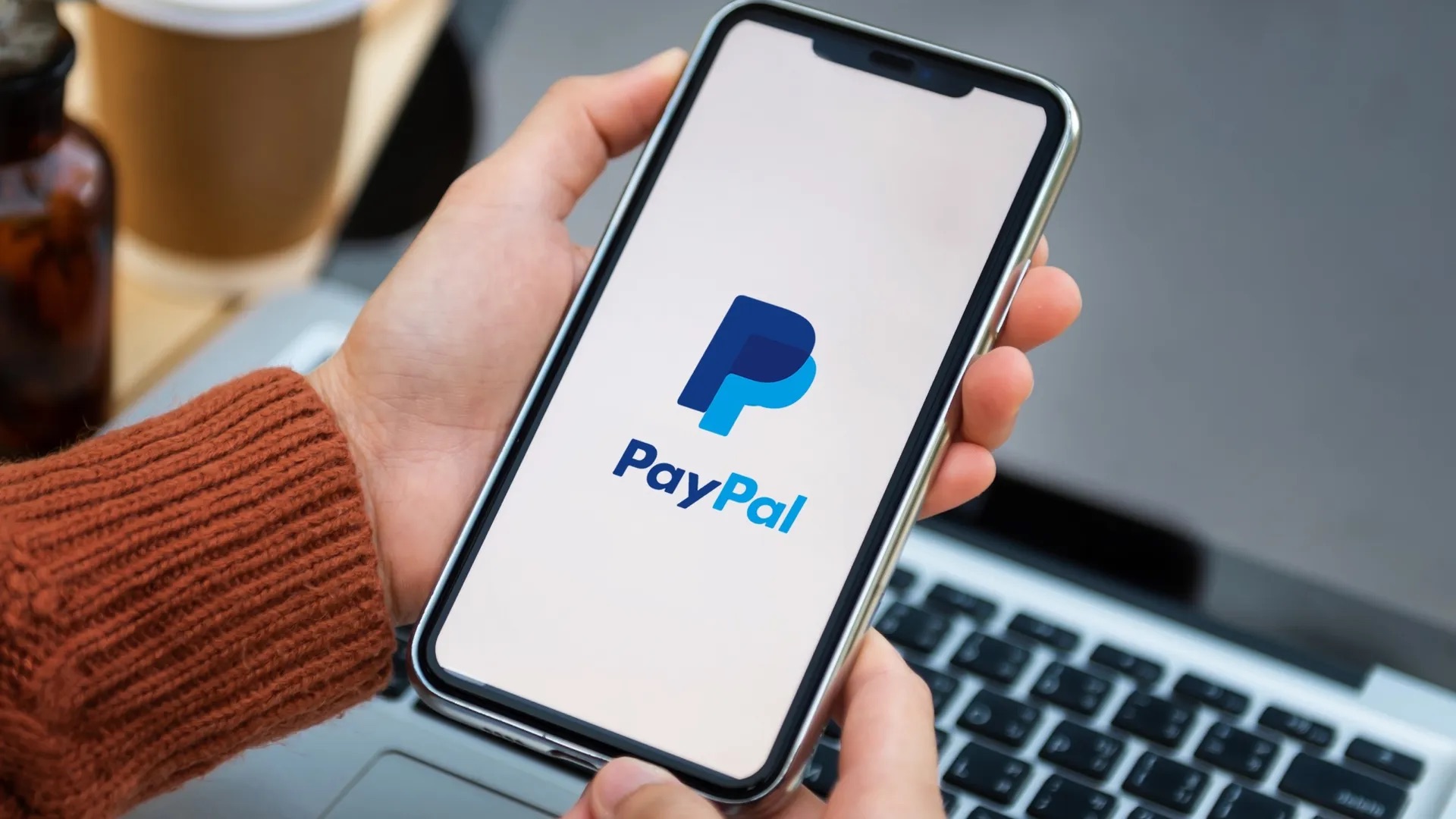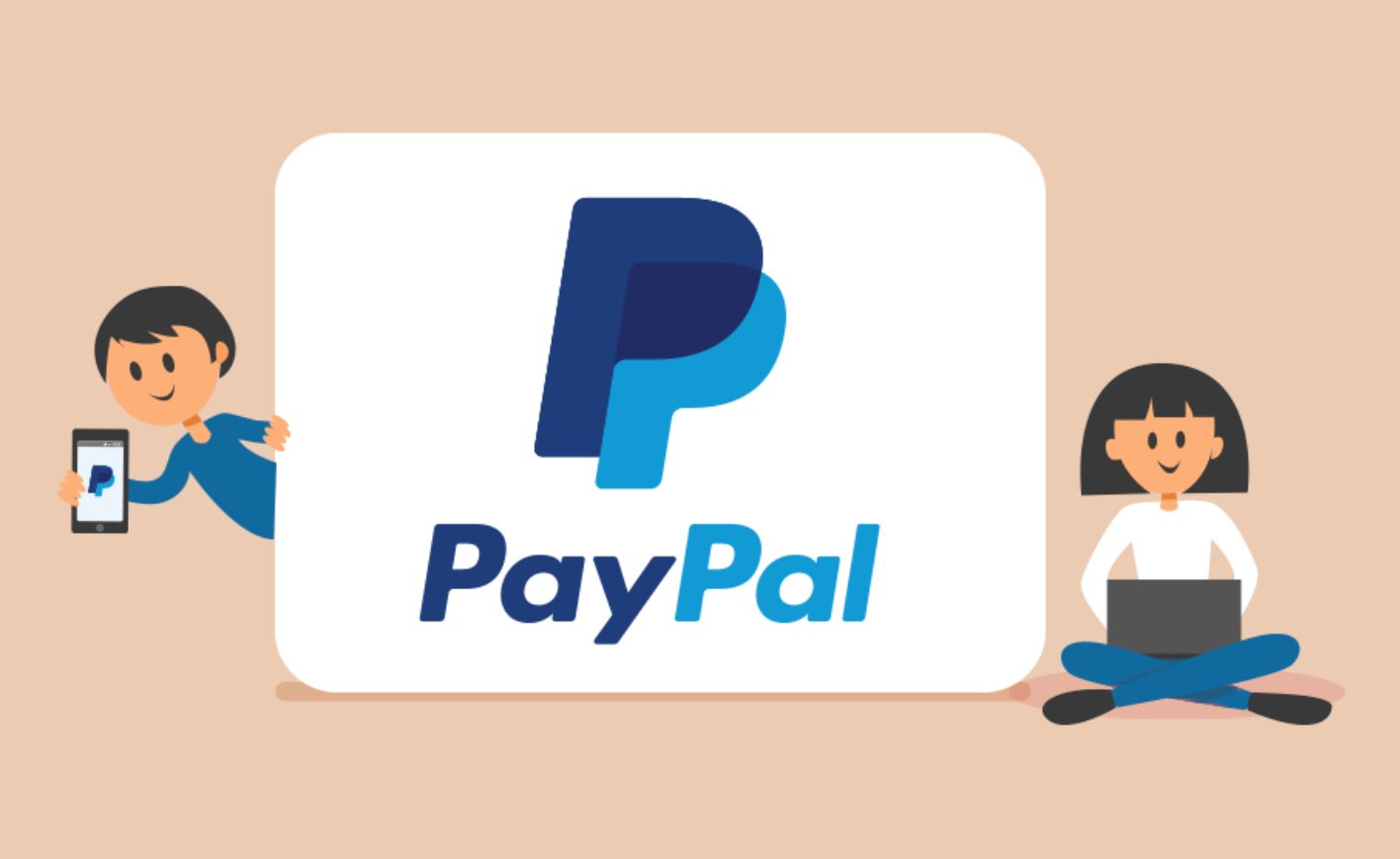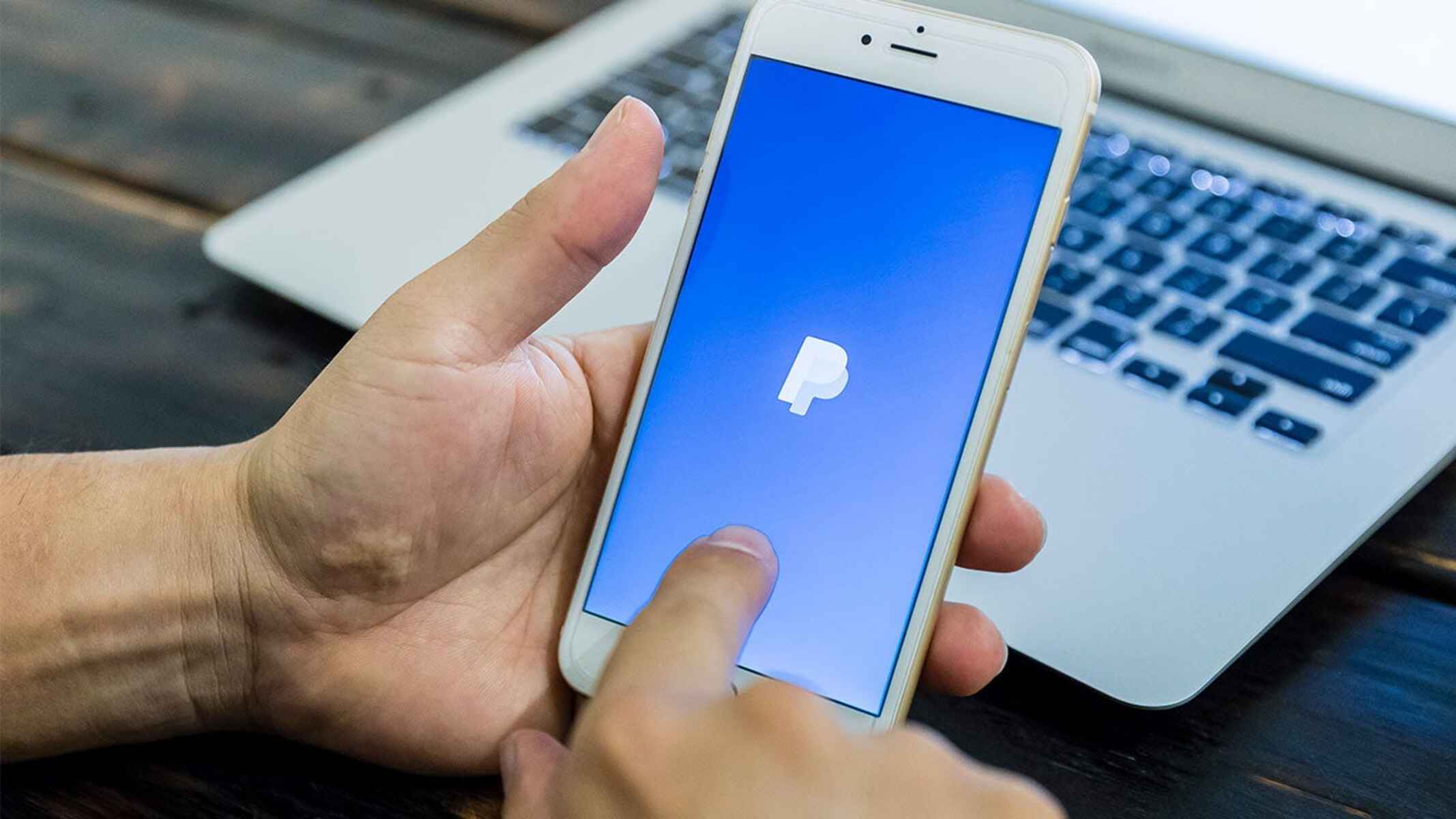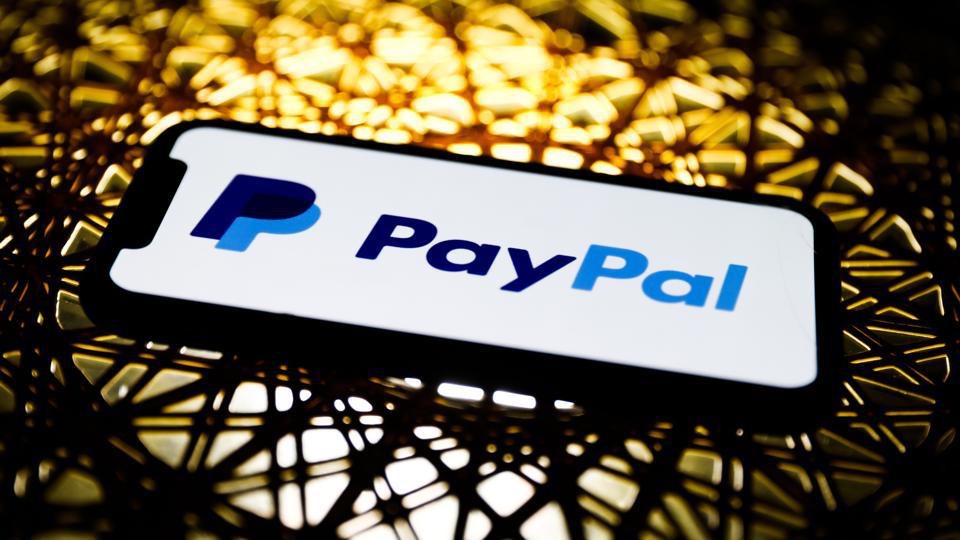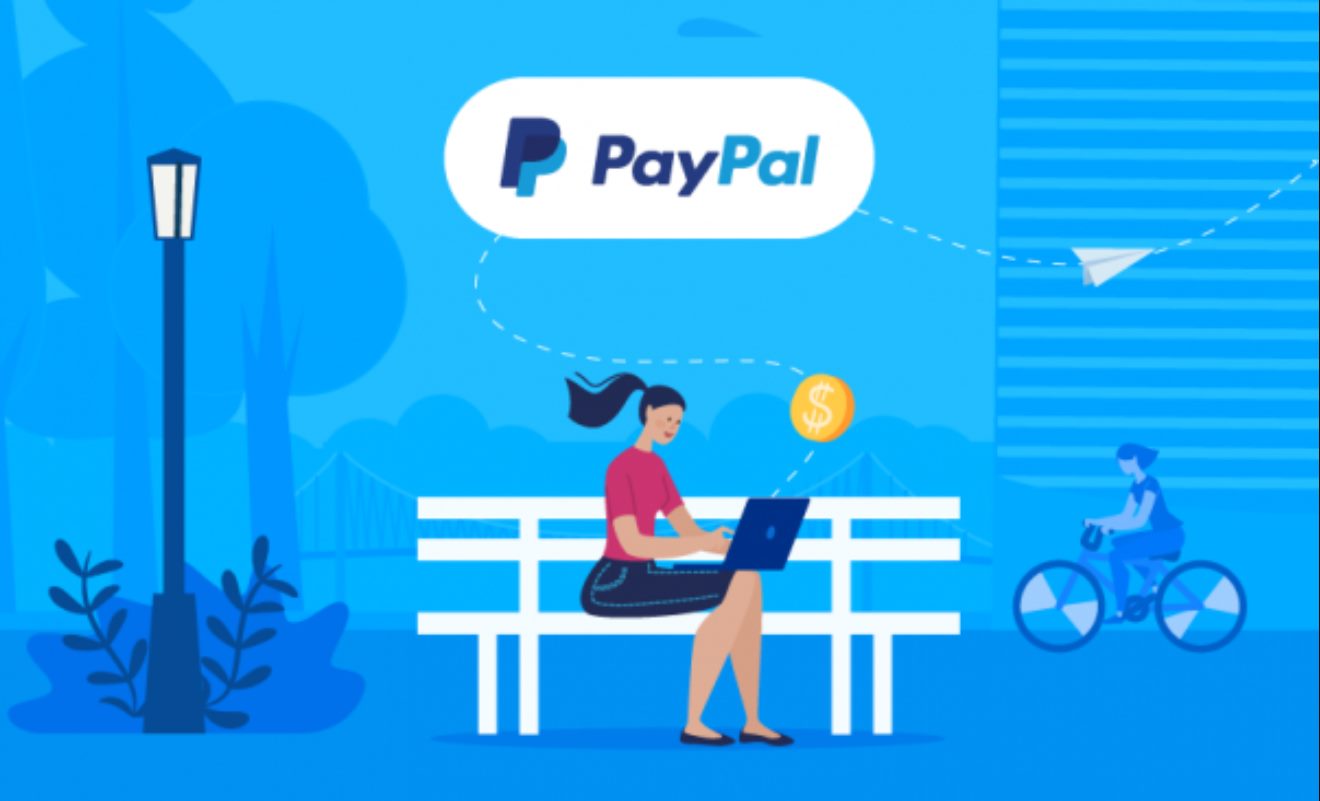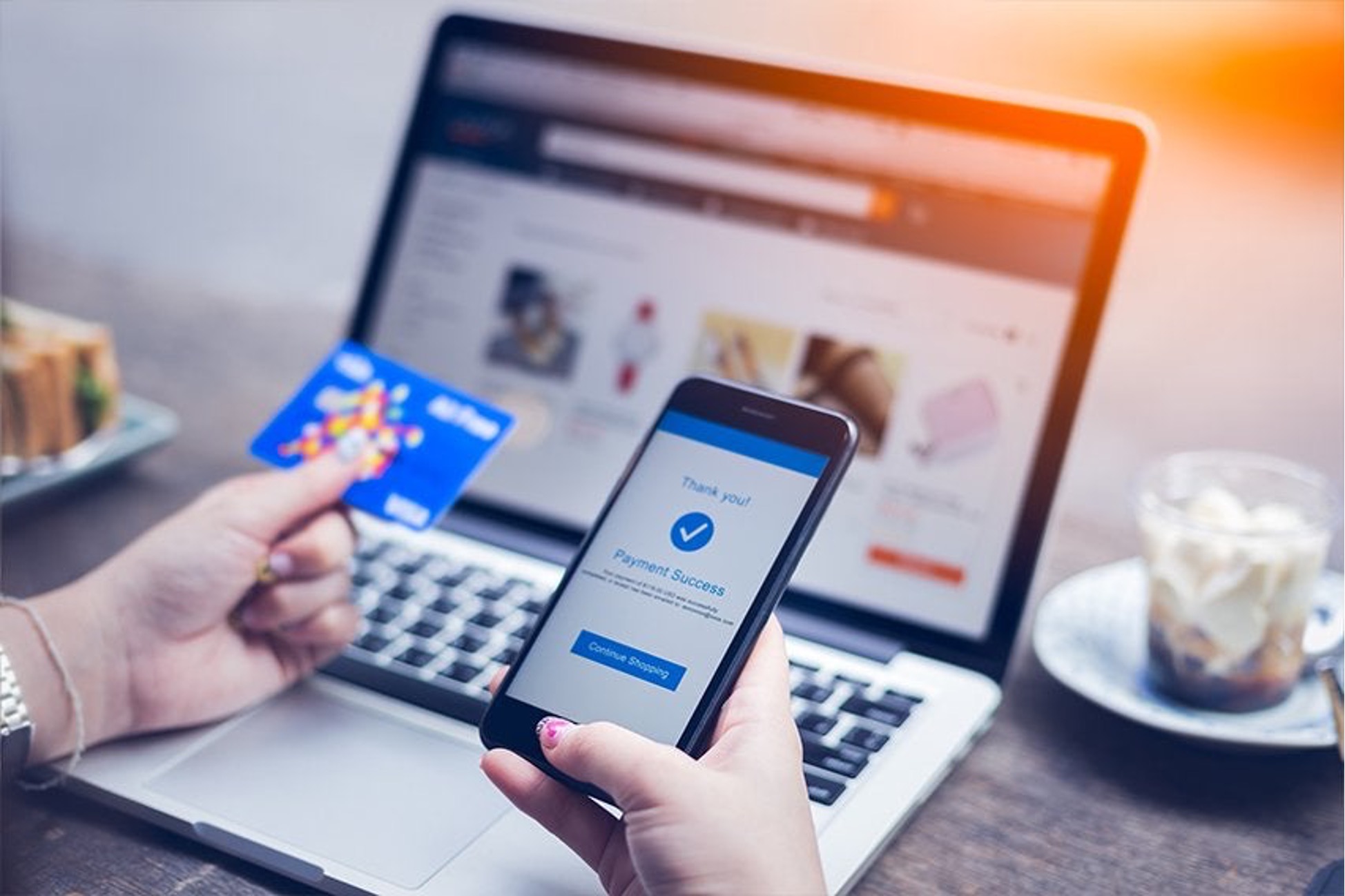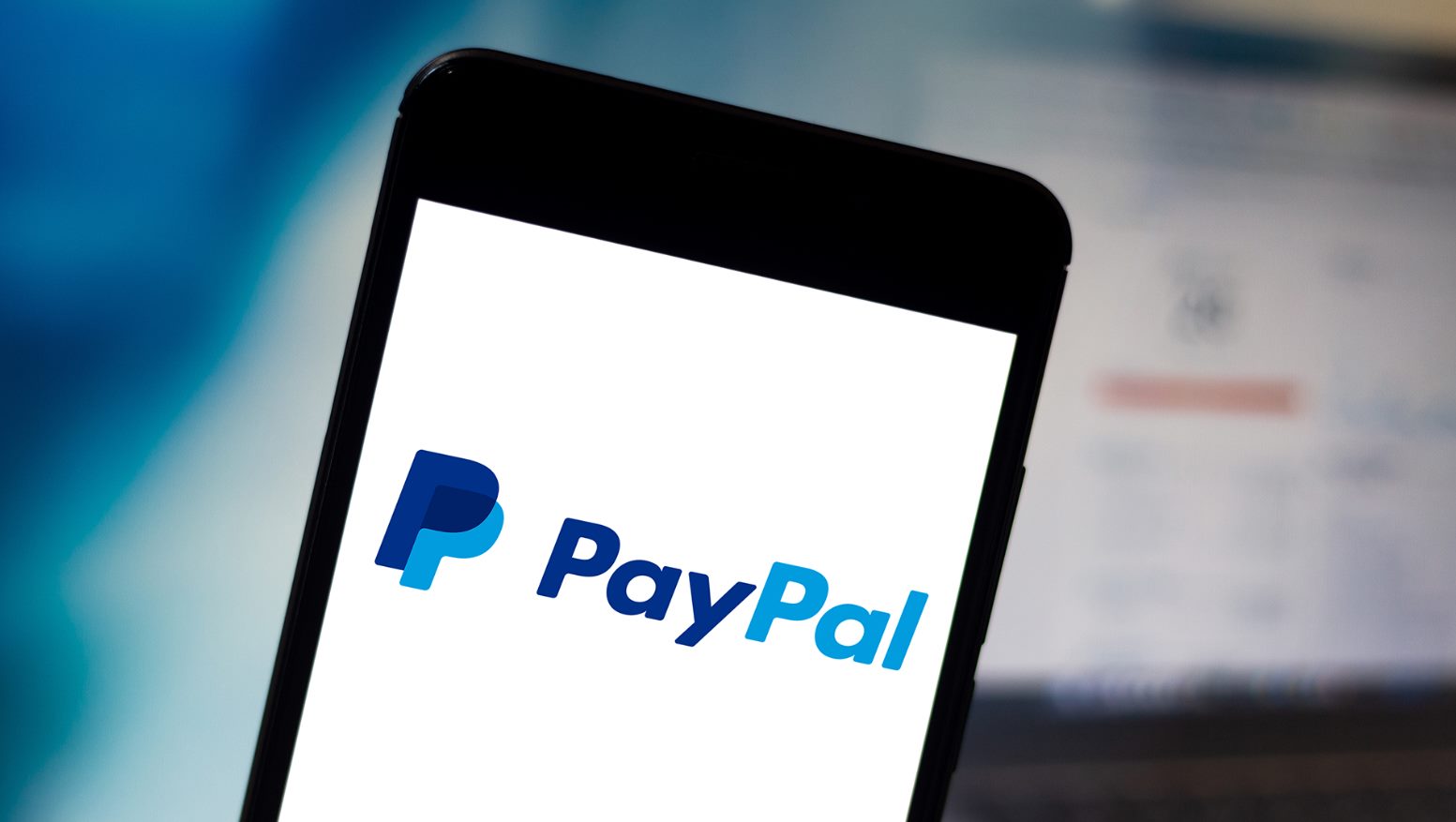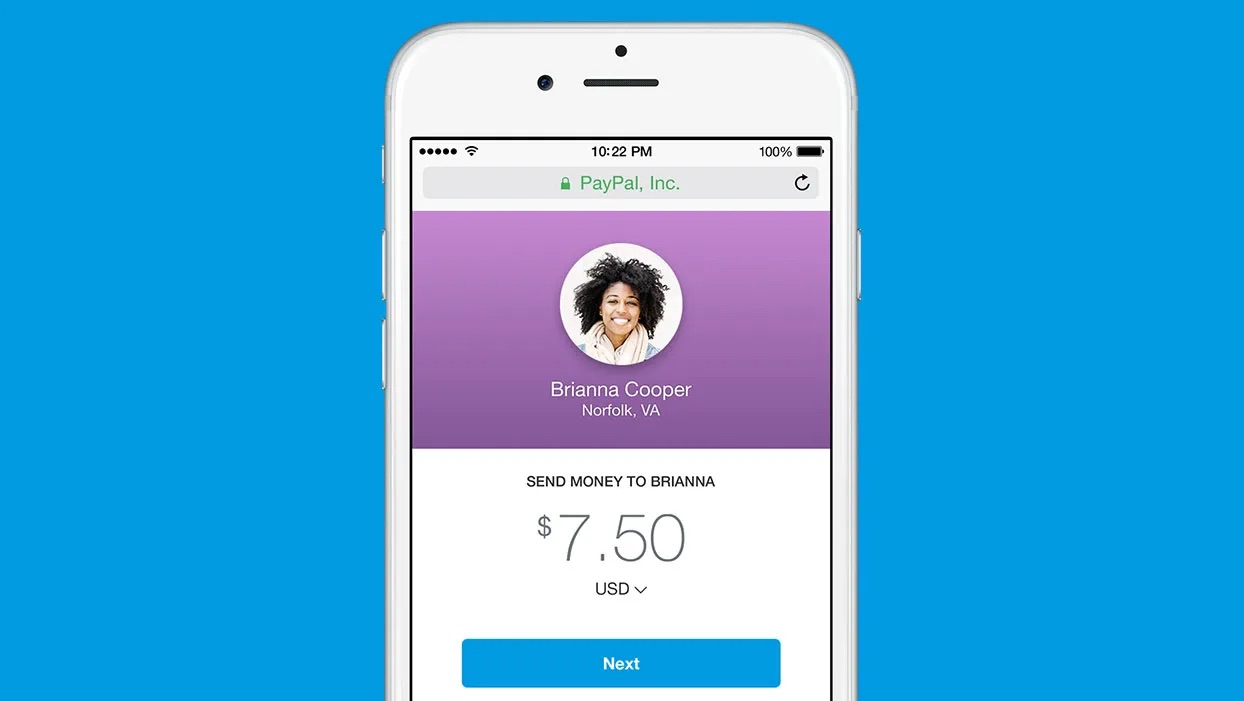Introduction
Welcome to this comprehensive guide on how to send money to your friends and family using PayPal. Whether you want to split the bill for dinner, reimburse a friend for concert tickets, or send a gift to a loved one, PayPal offers a convenient and secure way to transfer funds.
With over 300 million active users worldwide, PayPal has become one of the most popular online payment platforms. Its user-friendly interface, robust security measures, and wide acceptance make it an ideal choice for sending money to friends and family.
In this guide, we will walk you through the step-by-step process of setting up a PayPal account, adding friends and family to your contacts, verifying your account, and linking a bank account or credit card. We will also explain how to send money to your loved ones, choose the currency and payment method, add a note or message to your payment, and confirm the transaction. Furthermore, we will cover receiving money from friends and family, withdrawing funds from your PayPal account, and provide troubleshooting tips for common issues.
By the end of this guide, you will have a clear understanding of how to send money to your friends and family using PayPal and be able to navigate the platform with confidence. So, let’s get started and explore the world of hassle-free money transfers!
Setting up a PayPal account
Before you can start sending money to your friends and family through PayPal, you’ll need to set up an account. Follow these simple steps to get started:
- Visit the PayPal website: Open your preferred web browser and go to the official PayPal website at www.paypal.com.
- Click on “Sign Up”: On the PayPal homepage, locate the “Sign Up” button and click on it to begin the registration process.
- Select your account type: PayPal offers two types of accounts – Personal and Business. Choose “Personal Account” if you’re using PayPal for casual payments among friends and family. If you plan to use PayPal for business transactions, select the “Business Account” option.
- Provide your email address: Enter your email address in the required field. Make sure to use a valid email address as this will be used to log in to your PayPal account.
- Create a password: Choose a strong and unique password for your PayPal account. It should be a combination of uppercase and lowercase letters, numbers, and special characters to ensure maximum security.
- Enter your personal information: Fill in the necessary personal details such as your name, date of birth, and address. PayPal requires this information to verify your identity and protect against fraud.
- Agree to the terms and conditions: Read through PayPal’s terms and conditions and privacy policy. If you agree to them, check the box to indicate your acceptance.
- Complete the security check: PayPal may ask you to complete a security check to ensure that you’re a real person and not a robot. Follow the prompts on the screen to verify your identity.
- Submit your registration: Once you’ve filled in all the required information and completed the security check, click on the “Agree & Create Account” button to submit your registration.
Congratulations! You’ve successfully set up your PayPal account. In the next section, we’ll cover how to add friends and family to your PayPal contacts so that you can easily send money to them.
Adding friends and family to your PayPal contacts
Once you have set up your PayPal account, it’s time to add your friends and family to your contacts. This will allow you to easily send money to them with just a few clicks. Here’s how you can do it:
- Log in to your PayPal account: Go to the PayPal website and enter your email address and password to log in.
- Access your PayPal contacts: Once you are logged in, look for the “Send & Request” tab at the top of the page. Click on it, and then select “Contacts” from the drop-down menu.
- Add a new contact: On the “Contacts” page, click on the “Add a Contact” button. A new window will appear where you can enter the details of the person you want to add.
- Enter the contact’s information: Fill in the required information, such as the contact’s name and email address. You can also add additional details like their phone number or physical address, though these are optional.
- Save the contact: After entering the contact’s information, click on the “Save” or “Add” button to save the contact to your PayPal account.
Repeat these steps for each friend or family member you want to add. Once you have added them to your PayPal contacts, you can easily select them when sending money, instead of having to manually enter their information each time.
It’s important to ensure that the contact information you enter is accurate. Double-check the email address and other details to avoid any errors that could result in the money being sent to the wrong person.
Additionally, PayPal also provides an option to import contacts from your address book or from platforms like Gmail or Outlook. This can save you time, especially if you have a long list of contacts to add.
In the next section, we will discuss the process of verifying your PayPal account, which is an important step to enhance the security and functionality of your account.
Verifying your PayPal account
Verifying your PayPal account is an essential step that helps to ensure the security and reliability of your transactions. By verifying your account, you gain access to additional features and higher transaction limits. Here’s how you can verify your PayPal account:
- Log in to your PayPal account: Go to the PayPal website and enter your email address and password to log in.
- Access your account settings: Once you are logged in, click on the gear icon or the “Settings” link, usually located near the top right corner of the page.
- Navigate to the “Account” tab: In the account settings, find and click on the “Account” or “Account & Security” tab to access the account-related options.
- Select “Verify your account”: Look for the option that says “Verify your account” or something similar. Click on it to start the verification process.
- Choose the verification method: PayPal offers different verification methods depending on your location and account status. Common verification methods include linking a bank account, adding a credit or debit card, or providing necessary identification documents.
- Follow the prompts: Depending on the verification method you choose, PayPal will guide you through the necessary steps. This may involve providing specific details, uploading documents, or confirming test deposits in your linked bank account.
- Confirm your verification: Once you have completed the verification process, PayPal will review the information provided. If everything is in order, your account will be verified, and you will receive a confirmation email.
Verifying your PayPal account adds an extra layer of security and allows you to take advantage of the full range of features PayPal has to offer. Depending on your location and account type, verified accounts may have higher payment and withdrawal limits, as well as access to advanced features like PayPal Buyer Protection.
It’s important to note that the verification process can take some time, as PayPal may need to review the information you provide. Be patient and ensure that you provide accurate and up-to-date information for a successful verification.
Now that your PayPal account is verified, you can proceed to the next section to learn how to link a bank account or credit card to your PayPal account for seamless transactions.
Linking a bank account or credit card to your PayPal account
In order to seamlessly send and receive money using PayPal, you’ll want to link a bank account or credit card to your account. This allows you to easily transfer funds between your PayPal balance and your bank account or use your credit card for transactions. Here’s how you can link a bank account or credit card to your PayPal account:
- Log in to your PayPal account: Visit the PayPal website and enter your email address and password to log in.
- Access your account settings: Once logged in, navigate to the settings section of your PayPal account. Look for the gear icon or the “Settings” link, usually located near the top right corner of the page.
- Select “Link a bank account” or “Link a card”: In the account settings, find the option to link a bank account or card and click on it to proceed.
- Provide the necessary details: Follow the prompts provided by PayPal to enter the required information. This may include the account or card number, routing number, cardholder name, and other relevant details.
- Confirm your linked account or card: After providing the necessary information, PayPal will verify the details and may ask you to confirm your ownership of the account or card. This can be done through a small charge or a verification code sent to your bank account or credit card statement.
- Complete the linking process: Once the verification process is complete, PayPal will confirm the successful linking of your bank account or card. You will receive a confirmation email for your records.
By linking a bank account or credit card to your PayPal account, you can enjoy the convenience of transferring funds directly between your PayPal balance and your bank account, as well as making payments using your linked credit card. This eliminates the need to manually enter your payment details for every transaction, making the process faster and more streamlined.
It’s important to note that PayPal takes security seriously, and your financial information is encrypted and protected. However, it’s always a good idea to ensure the security of your own devices and accounts by using strong passwords, enabling two-factor authentication, and keeping your devices and software up to date.
With your bank account or credit card linked, you are now ready to send money to your friends and family through PayPal. The next section will guide you through the process step-by-step.
Sending money to friends and family through PayPal
Now that your PayPal account is set up, your friends and family are added to your contacts, and you have linked a bank account or credit card, it’s time to learn how to send money to your loved ones through PayPal. Follow these steps to easily transfer funds:
- Log in to your PayPal account: Visit the PayPal website and enter your email address and password to log in.
- Access the “Send & Request” tab: Once logged in, click on the “Send & Request” tab, usually located at the top of the page.
- Choose the payment type: Select the option to “Send money to friends and family” from the available choices. This ensures that you won’t incur any extra fees for the transaction.
- Enter the recipient’s email or mobile number: In the designated field, enter the email address or mobile number associated with the PayPal account of the person you want to send money to. If they’re in your PayPal contacts, you can also select their name from the list.
- Specify the amount: Enter the amount you want to send. PayPal supports various currencies, so make sure you select the correct one if necessary.
- Choose the funding source: Select the funding source you want to use for the transaction. If you have multiple linked bank accounts or cards, you can choose among them. You can also use your PayPal balance if you have funds available.
- Add a note or message (optional): If you want to include a note or message with the payment, you can enter it in the provided text box. This can be useful for providing context or instructions to the recipient.
- Review and confirm the transaction: Double-check all the details of the transaction, including the recipient’s information, payment amount, and funding source. Once you are satisfied, click on the “Send” or “Confirm” button to initiate the money transfer.
- Receive confirmation: PayPal will provide confirmation of the transaction, either on the website or via email. You can keep this confirmation for your records.
It’s worth noting that when sending money to friends and family through PayPal, it’s generally best to use the “Send money to friends and family” option rather than the “Pay for goods and services” option. This way, you can avoid any unnecessary fees that may be associated with commercial transactions.
With PayPal, sending money to your loved ones is quick and hassle-free. Whether it’s for splitting a bill, repaying a debt, or sending a gift, PayPal provides a secure and reliable platform for conducting transactions.
In the next section, we will explore how to choose the currency and payment method for sending money.
Choosing the currency and payment method for sending money
When sending money through PayPal, you have the flexibility to choose the currency and payment method that suits your needs. Depending on where you and the recipient are located, as well as the available options in your PayPal account, you can make these selections to ensure a smooth transaction:
- Select the currency: PayPal supports various currencies, allowing you to send money in the recipient’s preferred currency. You can choose the currency by clicking on the dropdown menu next to the payment amount. Make sure to select the correct currency to avoid any confusion or conversion fees.
- Consider the exchange rate: If you’re sending money in a currency different from your default currency, PayPal will display the current exchange rate. Take note of the exchange rate and any associated fees before confirming the transaction. Keep in mind that exchange rates may fluctuate, so the final amount received by the recipient might be different.
- Choose the payment method: PayPal offers multiple payment methods depending on the options you have linked to your account. You can choose to pay using your PayPal balance, linked bank account, or credit card. Select the appropriate payment method from the available choices. If you have funds available in your PayPal balance, it will be used by default unless you specify otherwise.
- Consider transaction fees: While sending money to friends and family using the “Send money to friends and family” option doesn’t usually incur fees, there may still be exceptions. It’s always a good idea to review PayPal’s fee policy and verify that no additional charges apply to your specific transaction.
- Confirm the details: Before proceeding with the payment, double-check all the details, including the selected currency, payment method, and any associated fees. This ensures that the recipient receives the correct amount in the desired currency.
When choosing the currency and payment method, it’s essential to communicate with the recipient about their preferences, especially regarding the currency they wish to receive the funds in. This can help avoid any unnecessary conversion fees or confusion.
By carefully selecting the currency and payment method, you can complete the transaction smoothly and efficiently. PayPal’s user-friendly platform makes it easy to make these selections before confirming the money transfer.
In the next section, we will discuss the option to add a note or message to your PayPal payment, allowing you to provide additional information or personalize your transaction.
Adding a note or message to your PayPal payment
When sending money to friends and family through PayPal, you have the option to add a note or message to the payment. This feature allows you to provide additional information or personalize the transaction. Here’s how you can add a note or message to your PayPal payment:
- Log in to your PayPal account: Visit the PayPal website and enter your email address and password to log in.
- Initiate a payment: Navigate to the “Send & Request” tab and select the option to “Send money to friends and family.”
- Enter the recipient’s information: Fill in the recipient’s email address or mobile number and specify the payment amount and currency.
- Find the “Add a note” field: Underneath the payment details, you will see a section labeled “Add a note” or “Add a message.”
- Write your note or message: Use the provided text box to enter your note or message. You can include additional details, provide context for the payment, or simply add a personal touch.
- Review your payment: Double-check all the details of the payment, including the recipient’s information, payment amount, currency, and the added note or message.
- Confirm the transaction: Once you are satisfied, click on the “Send” or “Confirm” button to complete the payment.
Adding a note or message to your PayPal payment can be helpful in various scenarios. For instance, if you are splitting the cost of a gift, you can mention the occasion or the recipient’s name in the message to provide clarity. It can also be useful for providing instructions or additional information related to the transaction.
Keep in mind that there may be character limits for the note or message field, so try to be concise and clear with your message. Avoid including sensitive or private information in this section, as it can be visible to both the sender and the recipient.
The ability to add a note or message adds a personal touch to your PayPal transactions, ensuring effective communication with the recipient. It enhances the overall user experience and helps to create a more meaningful and personalized money transfer.
In the next section, we will go over the steps to confirm and complete the PayPal transaction, finalizing the process of sending money to friends and family.
Confirming and completing the PayPal transaction
Once you have entered all the necessary details, including the recipient’s information, payment amount, chosen currency, and any additional note or message, it’s time to confirm and complete the PayPal transaction. Follow these steps to finalize the payment:
- Review the transaction details: Before proceeding, take a moment to carefully review all the information displayed on the confirmation page. Ensure that the details, including the recipient’s information, payment amount, and any additional note or message, are accurate.
- Double-check the payment source: If you have multiple funding sources linked to your PayPal account, make sure that the correct payment method is selected. This can include your PayPal balance, linked bank account, or credit card.
- Confirm the transaction: Once you are satisfied with the information and have validated the payment source, click on the “Send” or “Confirm” button to initiate the transfer of funds.
- Observe the transaction status: After confirming the payment, PayPal will process the transaction and display a confirmation message on the website. Additionally, you may receive an email confirmation. The recipient will also receive a notification of the payment.
- Keep a record of the transaction: It is a good practice to keep a record of the transaction for future reference. You can save the confirmation email or take a screenshot of the confirmation page as proof of the completed payment.
Confirming and completing the PayPal transaction is a crucial step to ensure that the money is successfully sent to your friends or family members. By carefully reviewing the details and confirming the payment, you can avoid any errors or misunderstandings.
It’s important to note that the processing time for the transaction may vary depending on factors such as the recipient’s location and the funding source used. In most cases, the transfer is completed within minutes, but it can take longer in certain circumstances.
By following these steps, you can confidently send money to your loved ones using PayPal. The platform offers convenience, security, and ease of use, making it a popular choice for online money transfers.
In the next section, we will explore the process of receiving money from friends and family through PayPal.
Receiving money from friends and family through PayPal
PayPal not only allows you to send money to friends and family but also makes it easy to receive funds from them. Whether it’s repayment for a loan, a gift, or any other purpose, receiving money through PayPal is simple and convenient. Here’s how you can receive money from friends and family:
- Log in to your PayPal account: Visit the PayPal website and enter your email address and password to log in.
- Check your PayPal balance: Once logged in, you can view your PayPal balance on the main dashboard. This balance reflects any funds received from previous transactions.
- Confirm the incoming transaction: If someone has sent you money through PayPal, PayPal will notify you via email and/or a message on the website. You may also receive a notification from the PayPal mobile app, if you have it installed. Check the notification and confirm the receipt of funds.
- Decide how to utilize the funds: Once the funds are in your PayPal balance, you can use them for various purposes. You can keep the funds in your balance for future use, transfer them to your linked bank account, or use them to pay for goods and services online.
- Withdraw funds to your bank account (optional): If you prefer to have the funds transferred to your bank account, go to the “Withdraw” or “Transfer” section of your PayPal account. Follow the instructions to link your bank account and initiate the withdrawal. Please note that this process may take a few business days to complete.
Receiving money through PayPal is straightforward and provides you with flexibility in managing your funds. You can use the received funds directly from your PayPal balance for online purchases or choose to transfer them to your bank account for offline transactions.
It’s important to keep in mind that PayPal may deduct certain fees when you receive money, especially if it involves currency conversion or receiving funds from international transactions. Familiarize yourself with PayPal’s fee policy to understand any applicable charges.
By following these simple steps, you can easily receive money from friends and family through PayPal. The platform provides a secure and convenient way for individuals to transfer funds, ensuring transparency and ease of use.
In the next section, we will discuss the process of withdrawing money from your PayPal account, enabling you to access your funds as needed.
Withdrawing money from your PayPal account
With PayPal, you have the flexibility to withdraw money from your account, allowing you to access your funds as needed. Whether you want to transfer the funds to your bank account or use them for offline transactions, here’s how you can withdraw money from your PayPal account:
- Log in to your PayPal account: Visit the PayPal website and enter your email address and password to log in.
- Check your PayPal balance: After logging in, you will see your PayPal balance on the main dashboard. This is the amount available for withdrawal.
- Click on “Withdraw funds” or “Transfer”: Look for the “Withdraw” or “Transfer” option in your PayPal account. It is usually located in the main navigation menu or a dedicated section.
- Select your preferred withdrawal method: PayPal offers various withdrawal methods, including transferring funds to your linked bank account or requesting a check to be sent to your home address. Choose the method that suits your needs.
- Enter the withdrawal details: Depending on the chosen withdrawal method, you may need to provide additional information such as bank account details or your mailing address. Ensure that you enter the correct details to prevent any delays or issues with the withdrawal.
- Initiate the withdrawal: After providing the necessary information, confirm the withdrawal request. PayPal will process the request, and the funds will be transferred to your chosen withdrawal method.
- Check your bank account or mailbox: The time it takes to receive the withdrawn funds depends on the withdrawal method and processing times. If you withdrew the money to your bank account, check your bank statement to ensure the transfer is complete. If you requested a check, wait for it to arrive in your mailbox.
It’s important to note that PayPal may charge fees for certain withdrawal methods or for currency conversions. Familiarize yourself with PayPal’s fee structure to understand any applicable charges.
By following these steps, you can easily withdraw money from your PayPal account, giving you access to your funds for offline transactions or to transfer them to your bank account for financial flexibility.
In the next section, we will provide some common issues and troubleshooting tips that can help you resolve any problems you may encounter while using PayPal.
Common issues and troubleshooting tips
While PayPal strives to provide a smooth and reliable user experience, it’s possible to encounter some common issues along the way. Here are a few frequently encountered problems and troubleshooting tips to help you resolve them:
- Payment not going through: If you are experiencing difficulties with a payment, ensure that you have sufficient funds in your PayPal account or that your linked payment method is valid. Double-check the payment details, including the recipient’s information and payment amount. If the issue persists, contact PayPal customer support for further assistance.
- Funds on hold or pending: Sometimes, PayPal may hold or place a temporary hold on funds, typically for security or verification purposes. If your funds are on hold or pending, it’s usually resolved within 21 days. However, if the hold lasts longer or you have concerns, reach out to PayPal customer support for clarification.
- Unauthorized transaction: If you notice a transaction on your account that you didn’t authorize, it may be a case of unauthorized activity. Immediately report the transaction to PayPal and change your account password to protect your account. PayPal’s resolution center can help you resolve unauthorized activity issues and investigate any potential fraudulent transactions.
- Issues with linking a bank account or credit card: If you’re having trouble linking your bank account or credit card, ensure that you are entering the correct information. Double-check the account and routing numbers or the card details. If the issue persists, reach out to your bank or credit card provider for assistance. PayPal customer support can also provide guidance in such situations.
- Forgotten password or difficulty logging in: If you can’t remember your PayPal password or are having trouble logging in, click on the “Forgot password” link on the login page. Follow the prompts to reset your password. Make sure to choose a strong password and keep it secure. If you are still unable to access your account, contact PayPal’s customer support.
Remember, PayPal’s customer support is always available to assist you with any issues or concerns you may have. They can provide personalized guidance and help resolve complex problems that may not be covered by general troubleshooting tips.
By staying vigilant, promptly resolving issues, and reaching out to PayPal’s support team when needed, you can ensure a smooth and hassle-free experience when using PayPal for your financial transactions.
Now that we have covered common issues and troubleshooting tips, let’s end this guide by summarizing the key points we discussed.
Conclusion
In this comprehensive guide, we have explored the process of sending money to friends and family through PayPal. We started by setting up a PayPal account and adding friends and family to our contacts. We then discussed the importance of verifying our PayPal account and linking a bank account or credit card for seamless transactions. We learned how to send money, choose the currency and payment method, and even add a note or message to personalize our payments. Additionally, we covered receiving money, withdrawing funds, and troubleshooting common issues that may arise.
PayPal offers a convenient and secure platform for sending and receiving money, making it a popular choice worldwide. Its user-friendly interface, robust security measures, and wide acceptance make it the go-to solution for money transfers among friends and family.
Remember to always double-check the details of your transactions, review transaction fees, and keep your account information secure. If you encounter any issues or have questions, PayPal’s customer support is available to assist you every step of the way.
With PayPal, sending money to your loved ones has never been easier. Whether it’s for a shared expense, a surprise gift, or a loan repayment, PayPal provides a reliable and efficient method to transfer funds within a few clicks.
We hope this guide has provided you with the knowledge and confidence to navigate PayPal’s features and make the most of your money transfers. Start enjoying the convenience and security of PayPal today!







